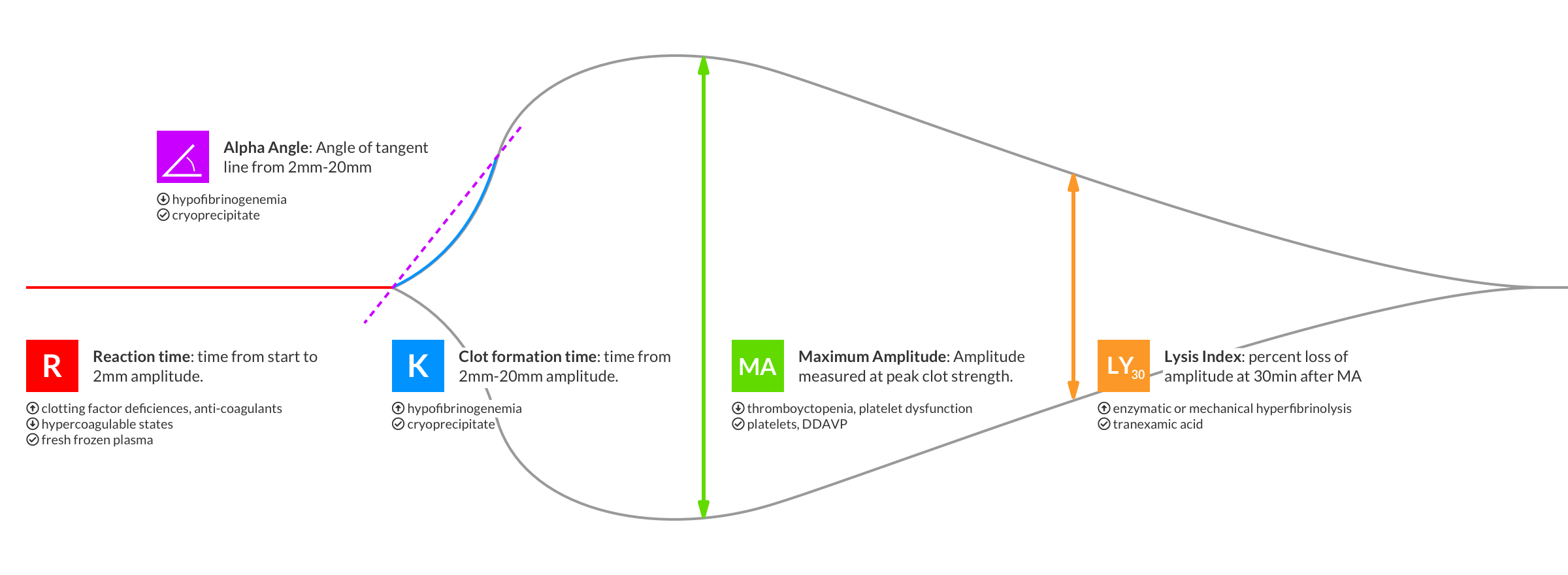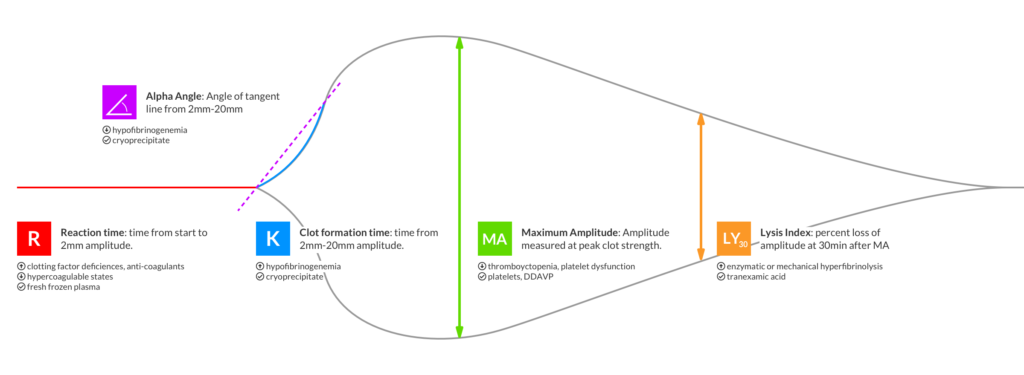Thromboelastography (TEG) is an assessment of hemostatic function intended to evaluate in vivo coagulation parameters, guiding the targeted correction of coagulopathy1. TEG has predominantly been studied in cardiac surgery, though research has extended to other peri-operative and peri-procedural transfusion management2-5.
Recently, a randomized trial explored the use of TEG to guide transfusion in trauma patients requiring massive transfusion6. 111 patients meeting requirements for massive transfusion protocol activation were randomized to a conventional coagulation assay (CCA) or TEG-guided transfusion algorithm. Patients in the TEG group demonstrated significantly decreased mortality at 28 days and reductions in plasma and platelet transfusion requirements.
More research is needed before TEG can be recommended for use in trauma resuscitation or other common emergency department applications7,8, however it may be useful to prepare by becoming familiar with the most basic aspects of thromboelastography.
Thromboelastography Summary
Examples
References
- Bolliger D, Seeberger MD, Tanaka KA. Principles and Practice of Thromboelastography in Clinical Coagulation Management and Transfusion Practice. Transfusion Medicine Reviews. 2012;26(1):1-13. doi:10.1016/j.tmrv.2011.07.005.
- Porte RJ, Bontempo FA, Knot EA, Lewis JH, Kang YG, Starzl TE. Systemic effects of tissue plasminogen activator-associated fibrinolysis and its relation to thrombin generation in orthotopic liver transplantation. Transplantation. 1989;47(6):978-984.
- Rahe-Meyer N, Solomon C, Hanke A, et al. Effects of fibrinogen concentrate as first-line therapy during major aortic replacement surgery: a randomized, placebo-controlled trial. Anesthesiology. 2013;118(1):40-50. doi:10.1097/ALN.0b013e3182715d4d.
- Weber CF, Klages M, Zacharowski K. Perioperative coagulation management during cardiac surgery. Current Opinion in Anaesthesiology. 2013;26(1):60-64. doi:10.1097/ACO.0b013e32835afd28.
- De Pietri L, Bianchini M, Montalti R, et al. Thrombelastography-guided blood product use before invasive procedures in cirrhosis with severe coagulopathy: A randomized, controlled trial. Hepatology. 2016;63(2):566-573. doi:10.1002/hep.28148.
- Gonzalez E, Moore EE, Moore HB, et al. Goal-directed Hemostatic Resuscitation of Trauma-induced Coagulopathy. Ann Surg. 2016;263(6):1051-1059. doi:10.1097/SLA.0000000000001608.
- Afshari A, Wikkelsø A, Brok J, Møller AM, Wetterslev J. Thrombelastography (TEG) or Thromboelastometry (ROTEM) to Monitor Haemotherapy Versus Usual Care in Patients with Massive Transfusion. Vol 24. (Afshari A, ed.). Chichester, UK: John Wiley & Sons, Ltd; 1996:404–3. doi:10.1002/14651858.CD007871.pub2.
- da Luz LT, Nascimento B, Rizoli S. Thrombelastography (TEG®): practical considerations on its clinical use in trauma resuscitation. Scand J Trauma Resusc Emerg Med. 2013;21(1):29. doi:10.1186/1757-7241-21-29.









